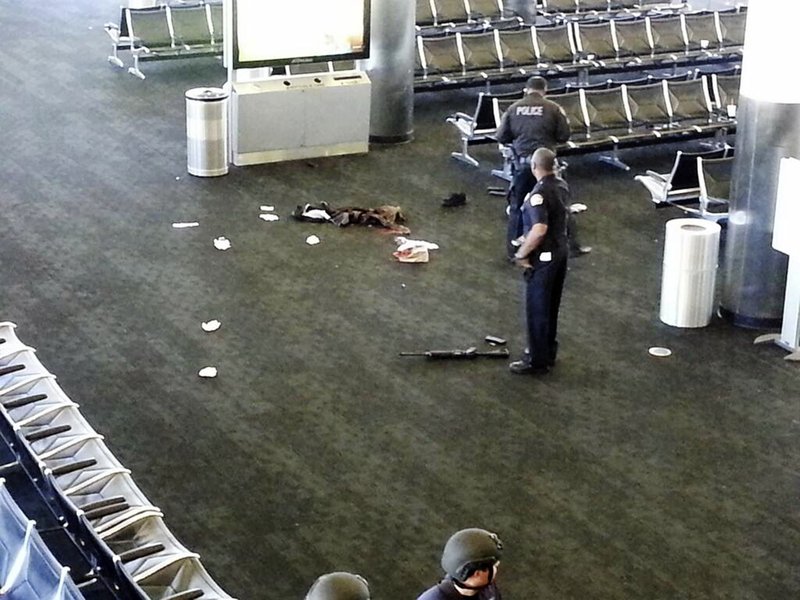LOS ANGELES -- Los Angeles International Airport was ill-prepared for a crisis when a gunman ambushed security officers last year, and the emergency response was hindered by communication problems and poor coordination, according to a report released Tuesday.
The report was prepared by a consultant on the basis of findings by several agencies that responded to the shooting and a review of camera footage, dispatch logs and 911 calls.
It looked at flaws in various divisions of the airport and systems that were in place, but did not single out individuals responsible for problems.
The lengthy report cited the heroism of officers who shot and arrested Paul Ciancia after a Transportation Security Administration officer was killed and three other people were injured Nov. 1.
However, it also detailed lapses in technology and coordination and included some 50 recommendations and a list of lessons learned from the shooting.
"Had the attacker not been highly selective in his targets, and/or had there been multiple attackers with weapons of greater lethality, the outcome might have been far different," according to the report.
Mayor Eric Garcetti said at a news conference Tuesday that the shortcomings in the communications infrastructure had been addressed since the shooting. All telephones and panic alarms at the airport now transmit location information to dispatchers when an emergency call is made, the mayor said.
Sean Burton, president of the board of airport commissioners, said the airport needs additional emergency-management staff, more training, new equipment and better agreements with law enforcement.
"We clearly have more work to do, and it begins with embracing the recommendations in the report," Burton said in a news release.
Not mentioned in the report was that two airport police officers assigned to Terminal 3 were out of position without notifying dispatchers, as required, when the shooting began.
The report also didn't discuss a decision months prior to the shooting to have police officers roam terminals instead of staffing security checkpoints such as the one approached by the shooter.
According to the report, various agencies had been hampered by poor communication during the shooting. It noted that airport police had previously upgraded to a $5.4 million high-tech radio system but often couldn't communicate with the 20-plus agencies that responded to the attack.
Senior police and fire commanders had no idea where to go or what the others were doing, and they didn't unify multiple command posts for 45 minutes.
In addition, there was nearly no communication between command-post officials and the airport's emergency-operations center, which the report described as being staffed by untrained midlevel managers.
Fire officials concerned about gunfire set up their command post away from Terminal 3, which made it harder to coordinate with police and delayed rescuing victims.
The Transportation Security Administration worker killed was not taken to an ambulance for 33 minutes. The report called for training airport police in tactical medicine so they can help the injured before paramedics arrive.
The review also confirmed that a Transportation Security Administration supervisor picked up a red phone immediately after the first shots were fired and hastily fled as the gunman approached.
The airport police dispatcher who answered the call "only heard the sounds of shouting and gunshots. With no caller identification for a call from a Red Phone, and no one on the other end of the line, it was not initially known from where the call originated," the report stated.
The report recommended that airport police look for flaws in security deployments because the gunman wasn't deterred by an airport police checkpoint.
A union representing service workers previously found that sky caps, baggage handlers and security employees had no idea what to do, were not trained for an evacuation and didn't know how to help passengers.
To keep travelers informed during chaotic situations, Garcetti said, the airport will develop a centralized public address system and a way to send messages directly to the cellphones of travelers at the airport. In addition, 11 message signs have been added to airport roadways.
The report was highly critical of the Los Angeles World Airports emergency-management program, which it said was "not well-defined or widely understood across the agency, or perhaps even respected."
The airport prepared a draft plan for dealing with a shooter in March 2013, but officials on the airport's emergency-management committee couldn't reach a consensus on it so it was never circulated.
A Section on 03/19/2014
